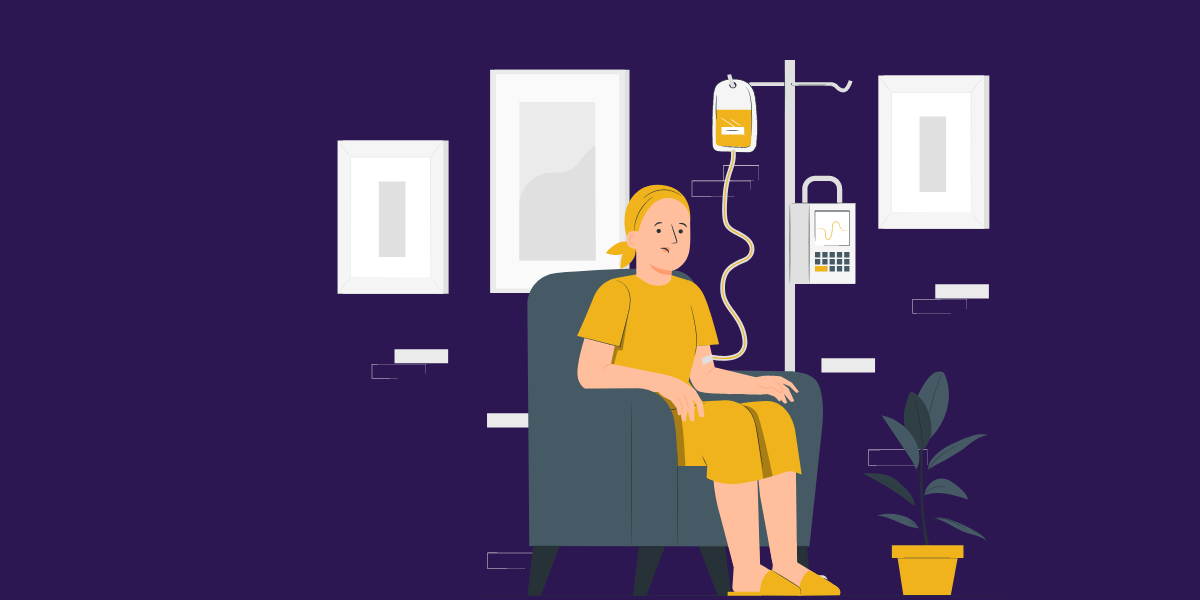OverviewCritical Illness
Being healthy allows you to go to work and earn an income to support yourself and your family. Critical illness insurance can provide protection for you and your loved ones to ensure that you are financially secure, so you can focus on your path to recovery in the event of health issues.



What is
Critical Illness Insurance?
Many of us understand how devastating a death of a loved one can be, both emotionally, and financially. With life insurance, you can feel more secure knowing that your loved ones will be financially supported if you die. What most Canadians fail to plan for, is the financial implications of an illness that requires treatment, or prevents them from working. Critical illness insurance (CI) is very similar to life insurance – it provides a tax-free cash payment if you are diagnosed with a serious condition. Critical illness insurance allows you to focus on your recovery, knowing that you have the funds to cover the unexpected expenses and treatments, without sacrificing your future.
What Qualifies As A
Critical Illness?
Our insurance partners currently provide coverage for 27 conditions. Some of the most common would include life-threatening cancer, stroke, heart attack, paralysis, Parkinson’s, major organ transplants, Multiple Sclerosis, Dementia including Alzheimer’s disease and many other common conditions. Each one of the qualifying conditions will be specified in the policy and is not subject to add or remove any conditions that were covered at the time of application.
What Can Payout
Funds Cover?
There is no limit to what these funds can be used for, but some of the most common uses include:
Covering your monthly expenses.
- Since you may not be working full-time, or at all, you will require funds to pay for your various monthly expenses including your mortgage. This payout can assist you by ensuring that you can make ends meet during the time of treatment and recovery.
Paying for additional expenses related to recovery.
- On top of your usual monthly expenses, you may have additional expenses, like alterations to make your house more accessible, parking for appointments, and even transportation to and from appointments and treatments.
Protecting your retirement savings.
- Pausing or stopping your ongoing contributions to your retirement plan can be costly in the long run, but it can be made significantly worse if you have to dip in to your retirement savings due to illness. There may be tax implications, where a significant portion of the funds you are withdrawing will actually be withheld to cover the future tax obligation. This can be detrimental to your retirement plans, forcing you to make tough decisions about what you will have to sacrifice in the future. Even if you are already retired, having to use your retirement funds earlier than expected might mean that you will outlive your otherwise adequate retirement savings.
Covering consultation and treatment costs.
- The payout from a CI policy will allow you to seek multiple opinions on your diagnosis to ensure you are receiving the best form of treatment. In addition, the funds can also be used to cover treatment costs above what may be covered by your provincial or group health plan. The main focus of any serious illness, is ensuring that you can receive the best possible treatment to improve your ability to make a full recovery.
To allow your spouse to take time off of work.
- Your spouse may want to have the flexibility to take time off of work to go to appointments, or even provide care to your children that you may normally assist with. In many cases, without critical illness insurance this is not possible, as one income has already been lost or reduced, and it is near impossible for most families to continue their current lifestyle with both incomes being affected.
Taking time for you and your family.
- Dealing with the implications of a poor health diagnosis can be stressful for you and your family. It is so important, in the interest of your recovery, and the ongoing mental and physical health of your family, that you are able to enjoy time together. Whether this be a vacation, or having the ability to take time off of work to spend together, critical illness insurance coverage can provide you with the funds to allow you to spend time with those most important to you.
Critical Illness Insurance
Frequently Asked
Questions
What types of coverage are available?
Very similar to the options for life insurance, there are a large variety of coverage options to fit your specific needs and budget:
Term coverage
Just like the name implies, this provides temporary coverage that lasts for a specified period of time. Some of the most common terms are 10 years, 20 years, or up to age 75. Term coverage provides the protection you need at an affordable premium. Like life insurance, term critical illness is usually where most people start, especially if you have a young family that relies on your income, along with a mortgage or other debts. The term you select will lock in your premiums for that set period of time, and will renew for another term, albeit at a higher price. You also have the ability to convert all or a part of your term coverage to a longer term or a permanent option as your needs change to keep your premiums more affordable.
Permanent coverage
This type of policy provides protection from the time it becomes active, until you make a claim. Your premiums will stay the same throughout the life of the policy, or you can choose a shorter time period (15 or 20 years for example) after which you will no longer pay premiums, but your policy will stay active. Although term is more affordable to start, it will increase in price at every renewal, while permanent coverage has higher initial premiums, but they will never increase. As your needs evolve, converting your term policy to permanent coverage may be the best fit for your needs.
What are the requirements for payment?
If you are diagnosed with one of the covered illnesses as defined by your policy, you can submit a claim to your insurance company. For many of the conditions, as soon as your claim is approved, you will receive the insurance cash payment. Certain conditions have a waiting period, which means that if you are alive after the required time passes, you will receive your benefit.
What happens if I never have to make a claim?
There are a number of optional “riders” that can be added to your policy to provide you with additional customization to your coverage. One option you might include is a return-of-premium rider. This means that if you don’t make a claim on your policy after as early as 10 years, you can choose if you would like to get refunded all of the premiums you have paid to this point and allow your policy to expire.
Some of the other riders include a return-of-premium at death where you can get all of your premiums back if you die without making a claim on your policy, coverage for a second event, where you would receive an additional payout if you are diagnosed with certain critical illnesses after your initial claim, and many other riders depending on your needs.
How much does critical illness insurance cost?
There is quite a bit of flexibility in the cost of critical illness insurance (CI). With the opportunity to adjust the coverage amount, coverage term and add riders, there is a policy to fit into your specified budget.
Critical illness insurance premiums will vary depending on a number of different factors:
- The amount of coverage
- The length of the coverage (term or permanent)
- Your age, gender, smoking status
- Medical and personal history, such as health, occupation, hobbies, family history, medications, etc.
With so many different critical illness insurance options out there, it is most important to take the time to review your specific coverage with your advisor. Our team at Hometown Life Insurance is here to assist you in better understanding your options and your ongoing coverage, so you can feel confident knowing you and your family are properly protected!


